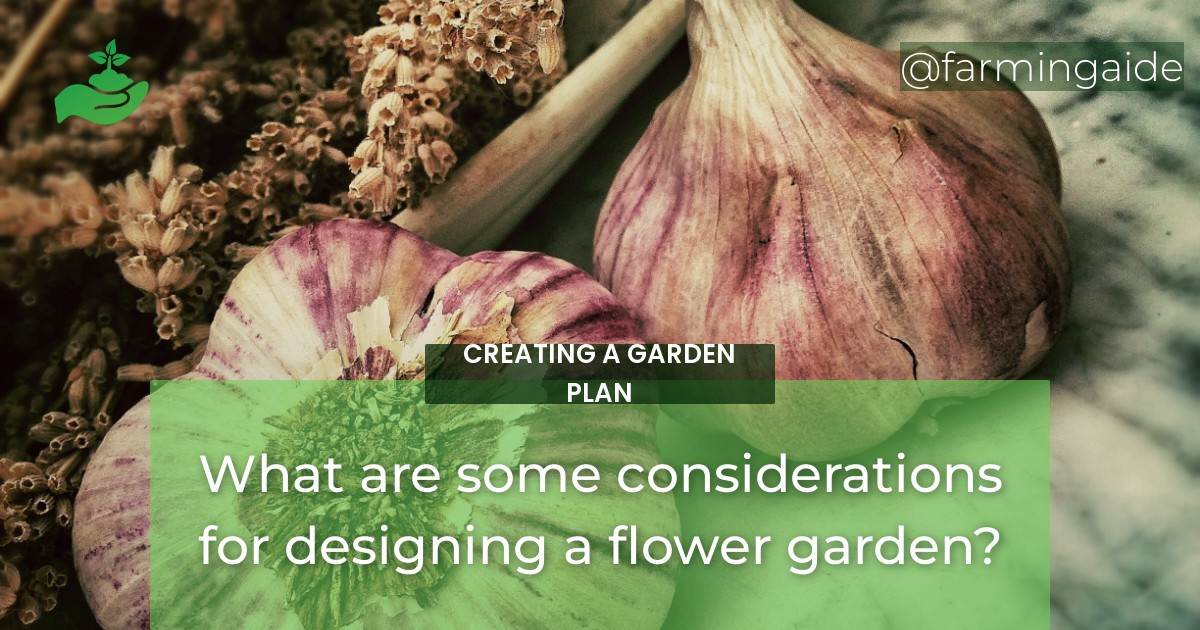Designing a flower garden can be a fun and rewarding experience. A well-designed flower bed can add color and beauty to any landscape and can also attract pollinators to your garden.
However, designing a flower garden requires careful thought and planning to ensure that your garden looks beautiful and thrives for years to come. Here are some considerations for designing a flower garden.
Table of Contents
Factors to Consider when Designing a Flower Garden
Color Schemes
One of the most important considerations when designing a flower garden is color. Choosing the right color scheme can make a big difference in the overall look and feel of your garden.
Choosing a Color Palette
When choosing a color palette for your garden, consider the colors of your house and other landscaping elements. You can choose colors that complement or contrast with these elements or choose a color scheme that is completely different.
Complementary Colors
Complementary colors are colors that are opposite each other on the color wheel. They can create a striking contrast and add visual interest to your garden. For example, purple and yellow are complementary colors.
Monochromatic Scheme
A monochromatic color scheme uses different shades and tints of the same color. This can create a calming and harmonious effect in your garden.
Analogous Scheme
An analogous color scheme uses colors that are next to each other on the color wheel. This can create a cohesive and unified look in your garden.
Triadic Scheme
A triadic color scheme uses three colors that are evenly spaced on the color wheel. This can create a vibrant and energetic effect in your garden.
Bloom Times
Bloom times are another important consideration when designing a flower garden. Understanding bloom times can help you create a garden that looks beautiful throughout the growing season.
Understanding Bloom Times
Some plants bloom early in the spring, while others bloom later in the summer. By choosing plants with different bloom times, you can create a garden that looks beautiful throughout the growing season.
Sequential Planting
Sequential planting involves planting different plants that bloom at different times throughout the growing season. This can help your garden look beautiful and full all season long.
Extending the Bloom Season
You can also extend the bloom season in your garden by choosing plants that bloom for a long time, such as coneflowers or daylilies, or by deadheading, which is the process of removing spent flowers to encourage new blooms.
Plant Heights
Plant heights are another important consideration when designing a flower garden. By choosing plants of different heights, you can create visual interest and depth in your garden.
Creating Visual Interest with Height
Tall plants can create a backdrop for shorter plants, while shorter plants can be used to create a border or edge around taller plants.
Layering Plants
Layering plants involves planting taller plants in the back of the garden and gradually decreasing the height of the plants toward the front of the garden. This can create a natural and flowing effect in your garden.
Considering Views and Focal Points
When designing a flower garden, consider the views from different areas of your landscape and choose plants that will create focal points or draw the eye toward different parts of the garden.
Attracting Pollinators
Attracting pollinators to your garden is important for the health of your garden and the environment. Pollinators help plants reproduce and also help to maintain biodiversity.
Importance of Pollinators
Pollinators include bees, butterflies, hummingbirds, and other insects and animals. They are important for the health of our ecosystem and play a vital role in the pollination of many of our food crops.
Choosing Plants that Attract Pollinators
Choosing plants that attract pollinators is an important consideration when designing a flower garden. Plants that produce nectar and pollen, such as coneflowers, bee balm, and milkweed, are great choices for attracting pollinators to your garden.
Providing Habitat for Pollinators
Providing habitat for pollinators, such as nesting sites for bees and butterfly host plants, can also help to attract and support pollinators in your garden.
Other Considerations
Other considerations when designing a flower garden include soil type, sun and shade, and maintenance requirements.
Soil Type
Understanding your soil type can help you choose plants that will thrive in your garden. Some plants prefer sandy soil, while others prefer clay soil.
Sun and Shade
Understanding the sun and shade patterns in your garden can also help you choose plants that will thrive in your garden. Some plants prefer full sun, while others prefer partial shade or full shade.
Maintenance Requirements
Finally, consider the maintenance requirements of the plants you choose. Some plants require more water and fertilizer than others, while others are more drought-tolerant and low-maintenance.
By considering these factors when designing a flower garden, you can create a beautiful and thriving garden that you can enjoy for years to come.
RELATED ARTICLES:


